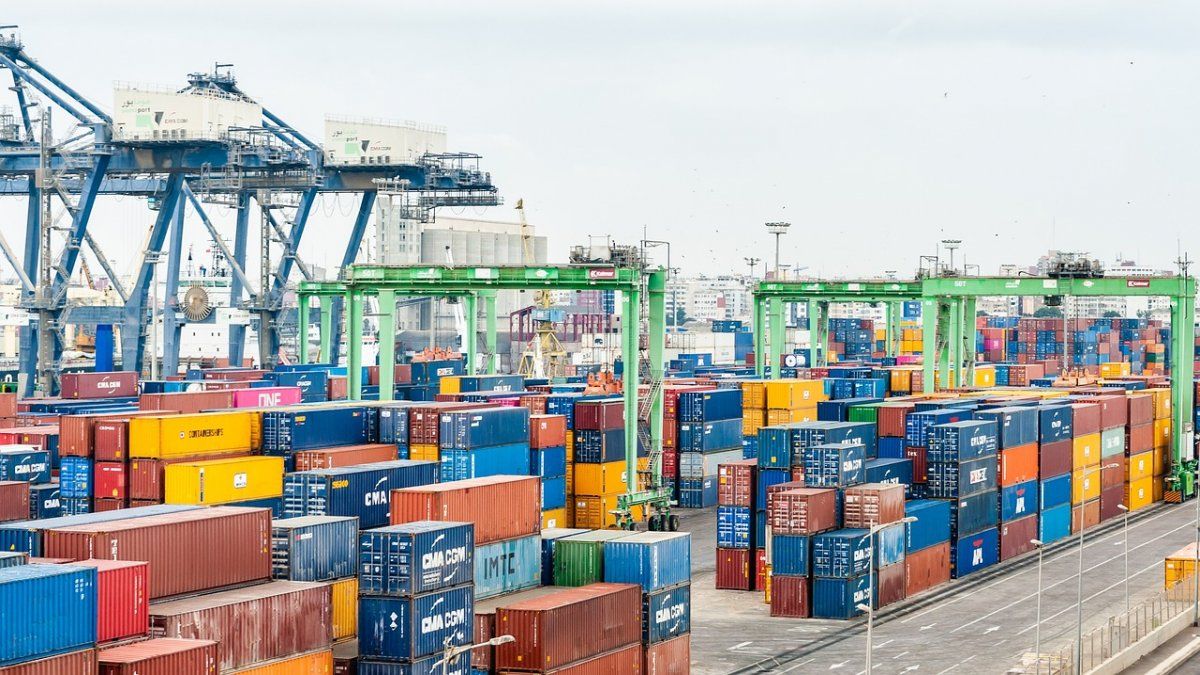The foreign exchange shortageexacerbated by the drought, obliges the Government to resort to all available tools to try to guarantee exchange rate stability and, at the same time, sustain economic activity as much as possible. That was what the economic team sought in May when validating an important rebound in imports of goods, which was supported by a new increase in the commercial debt of the companies with their parent companies and in the jump in the approval of permits in yuan. As Ámbito learned from official sources, the purchases abroad reached about US$7,000 million last month and played the highest level since august.
Within a framework of strict exchange control, this amount was reached through the increase in commercial debt promoted by different measures of the Central Bank. For example, in May importers accessed the official exchange market for some US$5.9 billion, the sources consulted confided, which represents a financing close to 13% of the total imported in the month. This allowed the effective demand for foreign currency from the reserves to be less than the total value of the merchandise that entered the country, in exchange for postponing the payment of just over US$1,000 million.
The other way that the economic team appealed to to validate a rise in imports (necessary to supply local production) is the use of yuan. On horseback to the activation of US$5,000 million of the swap with China for use with free availability, so far this year the approvals of SIRAS (the current authorization system to import) directly in the currency of that country have accelerated : As reported by this newspaper, between January and May there were operations for the equivalent of US$2,321 million (93% concentrated in the last two months). Last month, according to official sources, the SIRAS in yuan reached US$1,089 million. Although it is probable that not all the approved merchandise entered the country that same month, the amount is equivalent to around 13% of the total imports processed in May.
The possibility of expanding this dynamic, which serves to support a portion of purchases abroad without putting pressure on the very few dollars from the BCRA coffers, was what Sergio Massa and Miguel Pesce agreed with the People’s Bank of China during the tour last week. In Beijing, the coin exchange renewal for the equivalent of US$19,000 million, which expired next August, and the activation of another u$s5,000 million freely available once the first $5 billion is used up. In addition to covering imports, these currencies can be used to intervene in the exchange market, in a year in which the impact of the drought is combined with the usual pressures of the electoral context.
For the moment, the effective use of the swap it is small. It will jump as the 90-day payment term imposed by the SIRAS in yuan is completed, less than the 180 days that apply to most of those that are processed in dollars. This was precisely the incentive that led many companies that trade with China to operate directly in the currency of the Asian giant. However, the last few months already show an incipient advance payments in yuanFor example, according to the official information accessed by this newspaper, it went from the equivalent of just US$14 million in April to US$152 million in May and US$102 million only in the first four wheels of June.
Rebound in imports
Purchases abroad reached a peak of US$8,664 million in June 2022, affected by the spike in energy prices due to the war in Ukraine and by the overstocking that many companies launched to take advantage of the gap would change. With the importation of gas for the winter finished and with greater control of operations introduced by Massa through the SIRAS, imports were around US$5,000 or 6,000 million between October last year and February 2023. In March, they advanced au $6,846 million and in April they were located at $6,017 million. In May, according to the sources consulted, they again exceeded US$7,000 million.
“The general approval rate (of imports) this year is 88%,” said the Secretary of Commerce, Matías Tombolini, in Urbana Play when asked about the obstacles claimed by some companies. And he assured that the industry is growing and that this would not be possible if there were a lack of inputs. In any case, Tombolini together with his Productive Development partner, José Ignacio de Mendiguren, and the head of Customs, Guillermo Michel, visited the headquarters of the UIA to keep a meeting which had precisely as its focus the businessmen’s demand to guarantee access to imported inputs for the next few months. In addition, a working group was formed between Customs and the manufacturing center to discuss alternatives to make payment terms more flexibleespecially in the case of freightpointed out UIA sources.
In any case, the impact of the drought will condition the activity. Preliminary estimates mark a drop in agricultural exports of around US$19.5 billion this year. The palliatives of the Government seek to mitigate this effect.
commercial debt
Inducing an increase in commercial credit was one of the ways promoted by the BCRA to postpone a portion of import payments, based on the projection that in 2024 the trade balance will return to a surplus of between US$13,900 and 16.800 million. In May, 13% of purchases abroad were settled in this way. In addition, in the accumulated of 2023, imports were registered for an estimated value of US$28.900 million, while the exchange market was accessed for an estimated amount of US$25.300 million. This involved a commercial debt growth of US$3.6 billion, which mostly came from intra-company operations covered by parent companiesthe sources said.
Some businessmen and opponents questioned the operation. The officials argue that the commercial debt remains “below the maximum reached in 2019, when it represented more than 40% of imports, and allows the economy to maintain growth despite the drop in exports caused by the historic drought that affected agricultural production”. At the end of last year, it represented 38.2% of the total, according to data from the BCRA.
The official engineering to try to avoid strong exchange rate upsets in the midst of the electoral process and the hole left by the drought aims to be completed through the ongoing negotiation with the International Monetary Fund. Massa’s team, which is preparing to travel to Washington next week, seeks to seal an advance on the next disbursements that includes the authorization of a percentage of those currencies to intervene in the exchange market.
Source: Ambito




